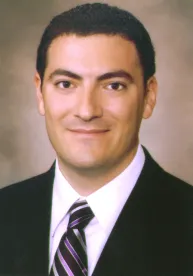When should an inventor consider seeking patent protection?
With marketing a product incorporating the invention of primary concern to most inventors, it is not uncommon for inventors to first consider patent protection during the final phases of the design process. However, an inventor should consider patent protection early in the design process to improve the likelihood that patent protection could be obtained on the inventor’s technology. Ideally, an inventor should consider patent protection immediately after having conceived of their invention to a sufficient detail so as to be able to explain to “one of ordinary skill in the art” how to make and use the invention. Every day that subsequently passes, additional “prior art” may become available for a patent examiner to cite against a later-filed application covering the inventor’s technology.
At the very least, an inventor should consider seeking patent protection prior to any public disclosure of the invention. Although under current U.S. law, an inventor is provided a one-year grace period from a public use, sale, or offer for sale of the invention within which to file an application in the U.S., most foreign countries require “absolute novelty” of the invention as a prerequisite to obtaining patent protection. In other words, to preserve a right to pursue patent protection in foreign countries requiring absolute novelty, an inventor must file a patent application covering the invention before any public disclosure of the invention occurs. Such an application, for example, may be a U.S. or an international patent application, discussed in more detail below.
What if foreign patent protection is desired?
Presuming an inventor first files an application in the United States, any foreign patent applications claiming priority to the U.S. application must be filed within one year from the filing date of the U.S. application. This right is based on the Paris Convention for the Protection of Industrial Property, of which the United States is a signatory.
An inventor may prolong the decision in which foreign countries an application should be filed by an additional period of time by filing an “international” patent application within one year from the filing date of their U.S. application. This right is based on the Patent Cooperation Treaty, of which the United States is also a signatory, and provides a period of 30 months from the priority date upon which the international application is based (i.e. the filing date of the U.S. application, in the above example) to file national applications in each of the PCT member countries in which patent protection is sought.
The international or “PCT” patent application itself cannot mature into an enforceable patent, but rather preserves the inventor’s right to later pursue patent protection in the individual PCT member countries. Currently, there is no “global” patent application that could ultimately mature into an issued patent that is enforceable in any country in the world.
What do I do with all of this information?
As a businessperson and entrepreneur, after reading this article, you should know enough about U.S. patent law and the patent system to understand how the patent system might be used to the advantage of your business. For example, you should have a better understanding of the role that the patent system could play in your business strategy, particularly if your business is innovation-focused. You should also now be aware that patent protection covering your technology should be considered early in the development process, rather than later or at the very end. At the very least, you should be equipped with enough information about U.S. patent law and the patent system to ask more informed questions when working with your patent attorney or initially engaging the services of a patent attorney.




 />i
/>i

